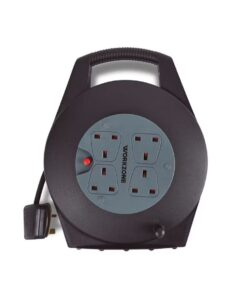BRITS may be unknowingly raising their risk of a deadly form of breast cancer by cooking with seed oils, cancer experts have warned.
Doctors think linoleic acid – a type of fat found in oils like sunflower and soybean – feeds cancer cells when heated during cooking.
Because of this home cooks should “moderate” their use of these oils, “especially high-risk individuals,” Professor Justin Stebbing, an oncologist from Anglia Ruskin University, said.
“Many oils such as olive oil contain less linoleic acid,” he added.
The warning comes after a new study found linoleic acid overstimulates a key control centre inside cells.
This fuels the growth of triple-negative breast cancer – the most aggressive form of the disease.
Read more on breast cancer
Scientists at Weill Cornell Medicine in New York found this out by performing tests on mice.
They fed one group a high linoleic-acid oil diet and compared tumour growth to a control group, who got none.
The mice that consumed linoleic acid developed significantly larger tumours.
They also found high levels of linoleic acid in blood samples from human patients with triple-negative breast cancer.
Most read in Health
Dr John Blenis, senior author of the study, said: “We now know that linoleic acid feeds cancer cell growth in a very specific way.
“This discovery sheds light on how to define which patients might benefit from specific nutritional recommendations.”
Breast cancer is the most common form of cancer in the UK, affecting one in seven women, according to Cancer Research UK.
Each year, around 56,000 women in the UK are diagnosed with breast cancer – and that figure jumps to about 300,000 in the US.
Around 85 per cent of women survive at least five years after being diagnosed.
But triple-negative breast cancer, which makes up 15 per cent of cases in the UK and US, is much harder to treat and much more aggressive.
It spreads faster and doesn’t respond to common hormone treatments like oestrogen blockers.
On average, 77 per cent of women with this type survive five years or more.
But if it’s caught late, that figure can drop to just 12 per cent.
Last year, Australian scientists unveiled a promising new pill, called CDDD11-8, which could help slow the growth of triple-negative breast cancer cells.
Researchers from the University of Adelaide said it had the potential to become a breakthrough treatment option for women facing this aggressive form of the disease.
‘It’s one piece of a vast puzzle’
“The findings do not warrant blanket avoidance of seed oils but suggest moderation and selectivity, especially for high-risk individuals,” Prof Justin wrote, in a piece for The Conversation.
“Do also consider eating more fruits and vegetables as part of a healthy, balanced diet.
Read More on The Sun
“While linoleic acid’s role in triple-negative breast cancer is a critical discovery, it’s one piece of a vast puzzle.
“A balanced, wholefood diet remains an important cornerstone of cancer prevention, and a strategy everyone can adopt.”
How to check your breasts
It is important to regularly check your breasts for any changes. Breast tissue reaches all the way up to your collarbone and across to your armpit, so it’s vital to check these areas too.
If you feel or see any changes in your breast you should always consult your GP.
Charity CoppaFeel! recommends checking your breasts monthly, so you can pick up on any changes quickly.
Breasts do change naturally as part of your monthly menstrual cycle, so you should get to know your breasts, how they feel and what changes they usually go through to know if anything is out of the ordinary.
Five-step check
There is a five-step self exam you can do at home to check for any changes.
Step one: Begin by looking in a mirror, facing it with your arms on your hips and your shoulders straight. You should be looking for any dimpling, puckering, bulging skin, redness, soreness, a rash or changes in the nipple.
Step two: Still looking in the mirror, raise both arms above your head and check for the same changes.
Step three: With your arms still above your head, check for any fluid coming from the nipples. This can include milky, yellow or watery fluid, or blood.
Step four: While lying down use your opposite hand to check each breast. Using a few fingers, keeping them flat and together, go in a small circular motion around your breasts. Make sure you feel the entire breast by going top to bottom in these small circles. It helps to develop a system or pattern to make sure every inch is covered. Use light pressure for the skin and tissue just beneath, medium pressure for the tissue in the middle of your breasts, and firm pressure to feel the tissue at the back, feeling down to your ribcage.
Step five: Feel your breasts while either standing or sitting, using the same small circular motions.









